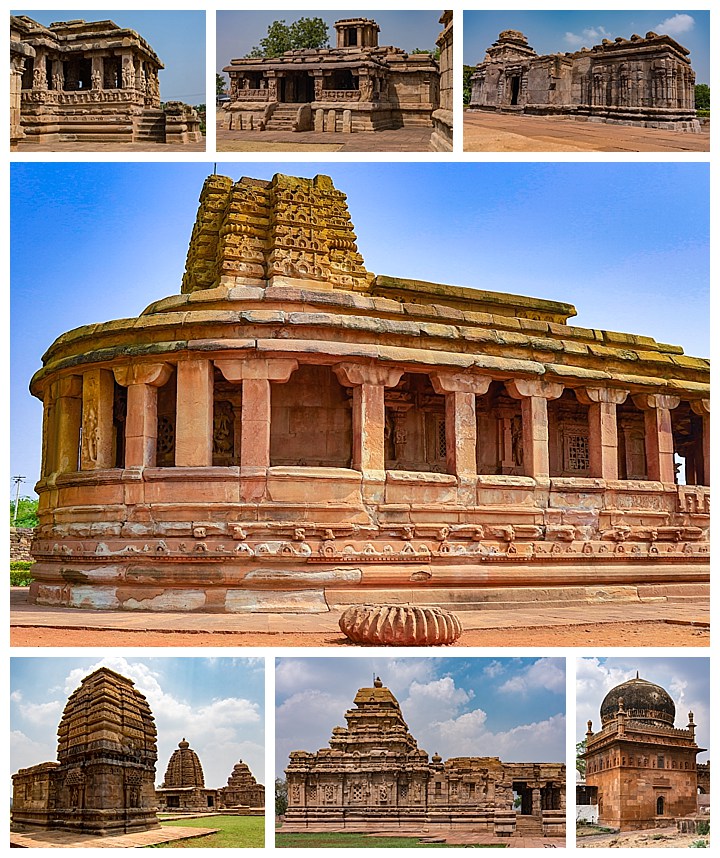
We then traveled to Karnataka, a state located to the north of Kerala, to see the major archaeological sites at Aihole, Pattadakal and Badami, where the ancient cave temples are located.
The first stop was Aihole, built between 4th – 12th century, a historic site of ancient Hindu, Jain, and Buddhist monuments. It has great cultural significance as the cradle of Hindu temple architecture, with more than 125 temples.
The second stop was Pattadakal, which was designated as a UNESCO world heritage site in 1987.The village lies on the banks of the Malaprabha River in Bagalkot district of North Karnataka region. The town displays both Dravidian (Southern) and the Nagara (Northern, Indo-Aryan) styles of temple architecture. What struck us most was how well preserved the sculptures were, even with the thousands of visitors and nothing preventing people from touching the stone with their greasy hands. The stories that were carved into the stone of the many Hindu gods were at times hilarious, and some appeared to be ancient soap operas.
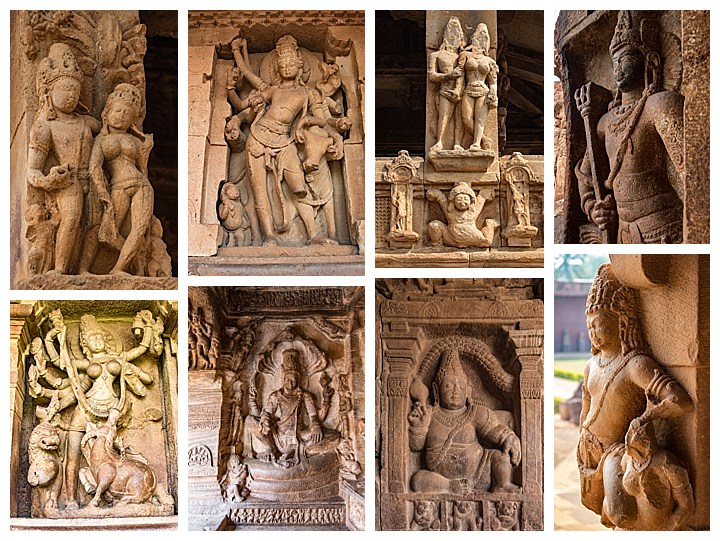
The final stop was Badami, the home of the famous cave temples of India, which consisted of four caves, which were each carved from a single piece of granite. The sculptures became more ornate and elaborate as we progressed from cave to cave, each created a couple centuries after the earlier one. The above images are all roughly life-size or larger, and depict various Hindu gods in various mythical stories.
The amazing part was just looking at the caves in their entirety. They are carved out of granite stone. The artists had to look at this mountain side, envision a complete three-dimensional scene, and then start carving from front-to-back, and from top-to-bottom. The technology to dig the cave was impressive enough, with no power tools, but adding the artistic element made it truly mind-boggling.
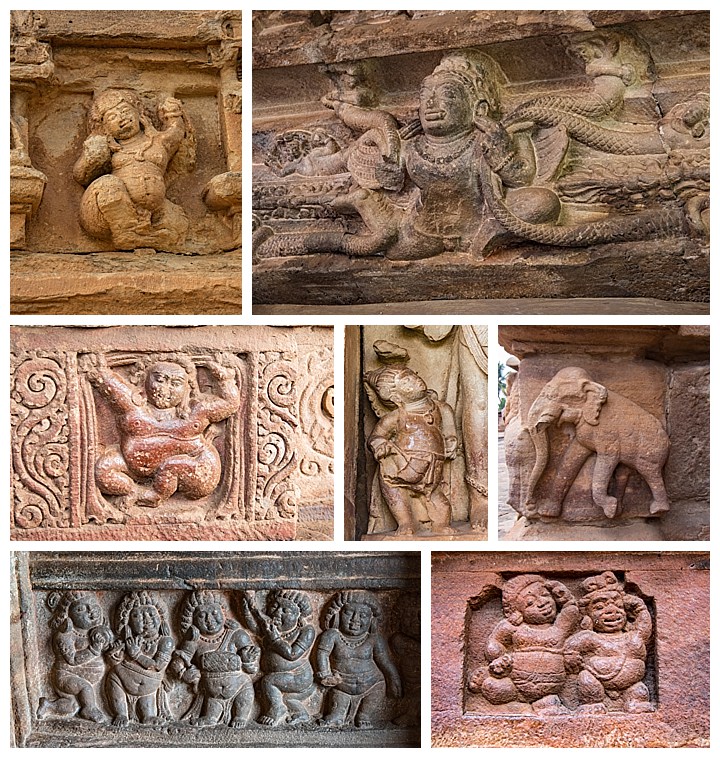
Among the larger life-size images were also hundreds of smaller bas-relief carvings of gods, dwarves, animals in still more mythical stories. These were seen at every turn.
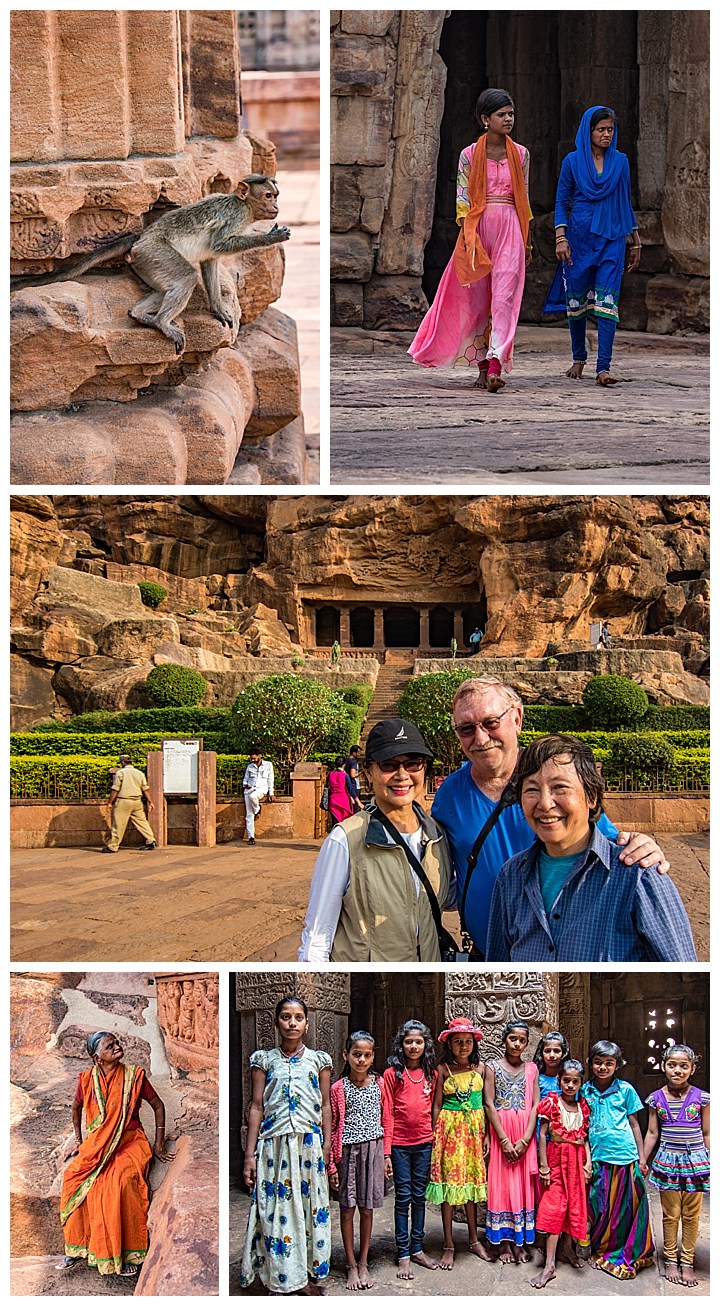
Of course, we always value the interactions with the people whenever we travel. There was a small group of school children who quickly latched onto us as foreigners, and requested to have their photo taken in one cave (lower-right). There were very few monkeys in this area, though one consented to have his portrait take (upper left). Our guide offered to take a photo of the three of us (Pauline, me, Evelyn left-to-right in center image).
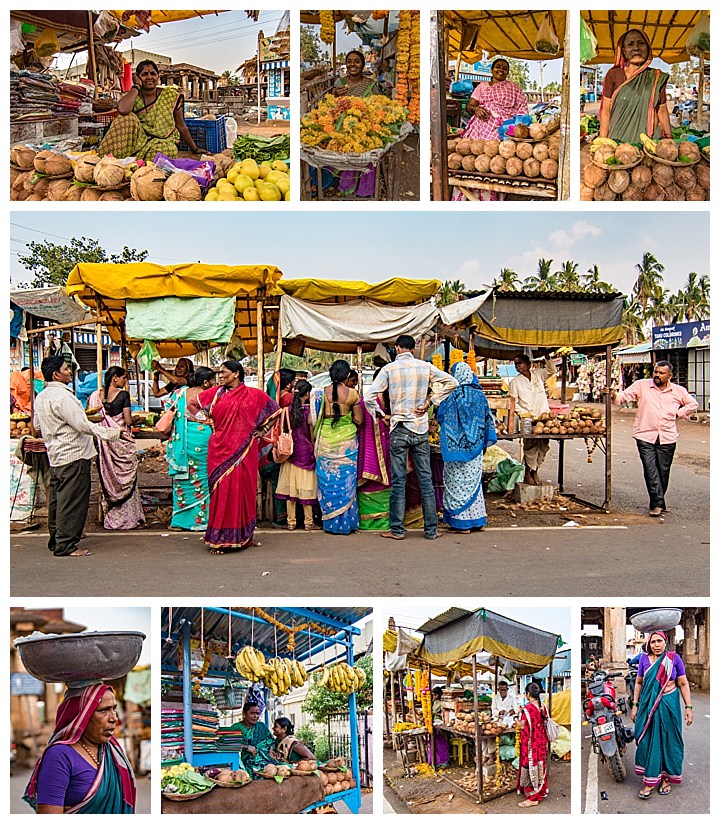
After exploring the caves and temples, we drove to the local village for Pauline to purchase more sarees, and where we observed how everyday life continues. Our driver informed us that this saree shop was the best.
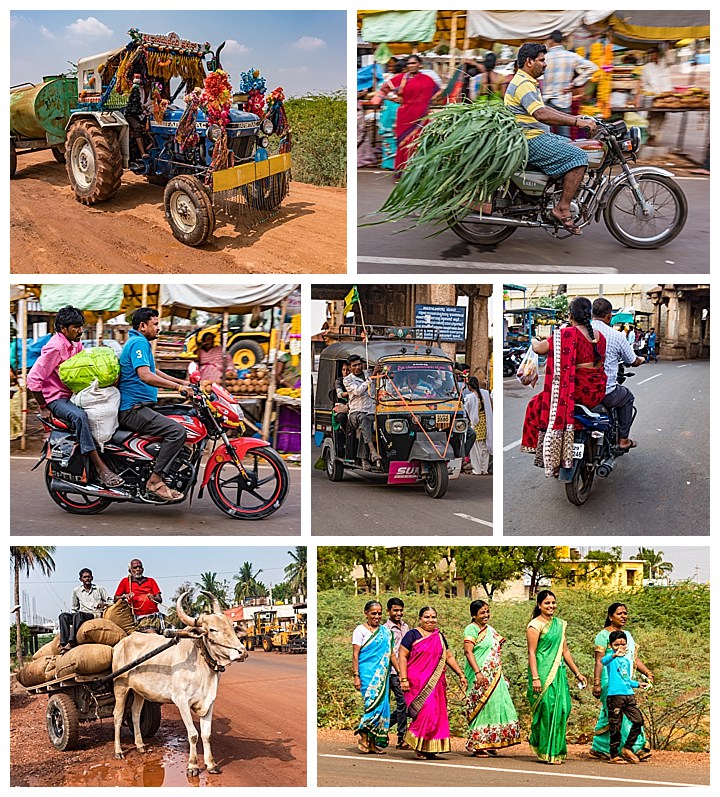
It was also fascinating to see the various forms of transportation in town. From tractors (upper-left) to motorcycles (upper-right) to families sharing a single bike (center-left) to tuk-tuks overflowing with an extended family (center) to ox carts (lower left) to simply walking (lower-right), people were always on the move. Gasoline is quite expensive relative to wages, so cars were rare.